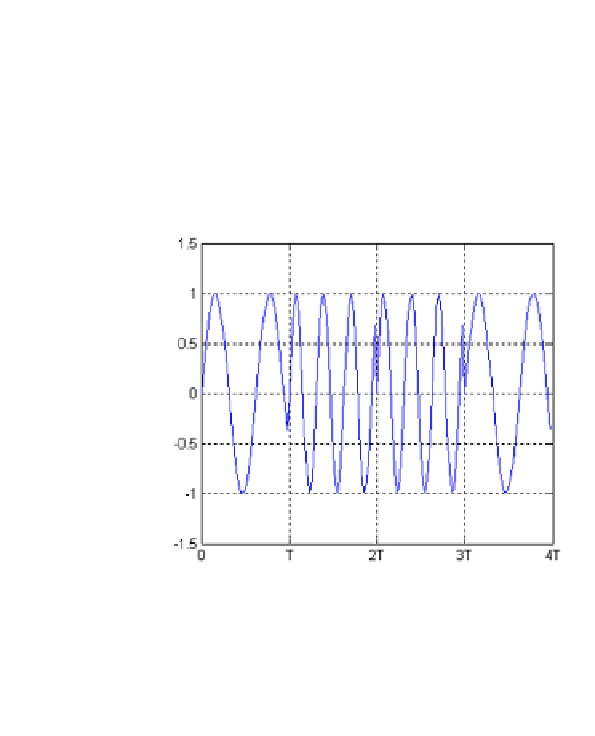Cryptography Reference
In-Depth Information
Choosing
Δ
f
=1
/T
,
ρ
j,n
=0
=
n
and the modulated
M
signals are orthogo-
nal. Orthogonal signals are generally chosen since signals of different frequencies
can easily be separated at reception. At instants
iT
where the M-FSK signal
changes frequency, the modulated signal presents a discontinuity since the phases
ϕ
j
are independent. We then speak of discontinuous-phase frequency modula-
tion. Figure 2.8 gives an example of a 2-FSK signal.
∀
j
Figure 2.8 - Frequency modulated signal with discontinuous phase.
The energy
E
s
used to transmit a group of data is equal to:
T
A
2
T
2
j
T
)
t
+
ϕ
j
)
dt
=
A
2
cos
2
(2
π
(
f
0
+
E
s
=
if
f
0
>>
1
/T
(2.32)
0
and the energy
E
b
used to transmit a bit is equal to
E
s
/
log
2
(
M
)
.
For a continuous flow transmission of data, the modulated signal can be
writtenintheform:
S
(
t
)=
A
i
iT
)cos(2
π
(
f
0
+
a
i
T
)
t
+
ϕ
i
)
h
(
t
−
(2.33)
,M,M
=2
m
.Every
T
seconds, the modulated signal
S
(
t
)
transmits a group of
log
2
(
M
)
binary data.
For 2-FSK modulation, the power spectral density of the signal
S
(
f
)
is equal
where the modulation symbol
a
i
is equal to
1
,
2
,
···
to:
γ
S
(
f
)=
1
4
(
γ
(
f
−
f
1
)+
γ
(
f
+
f
1
)+
γ
(
f
−
f
2
)+
γ
(
f
+
f
2
))
(2.34)
where
f
1
=
f
0
+1
/T
and
f
2
=
f
0
+2
/T
and:
γ
(
f
)=
A
2
T
4
sin
πfT
πfT
2
+
A
2
4
δ
(
f
)
(2.35)









